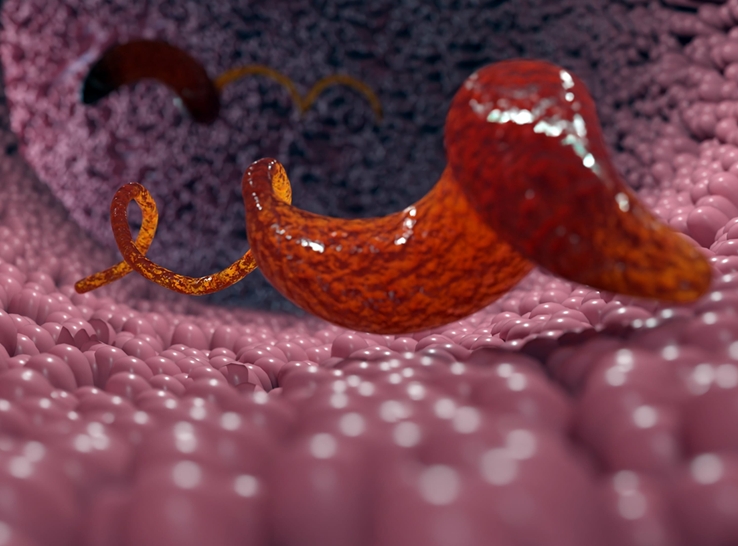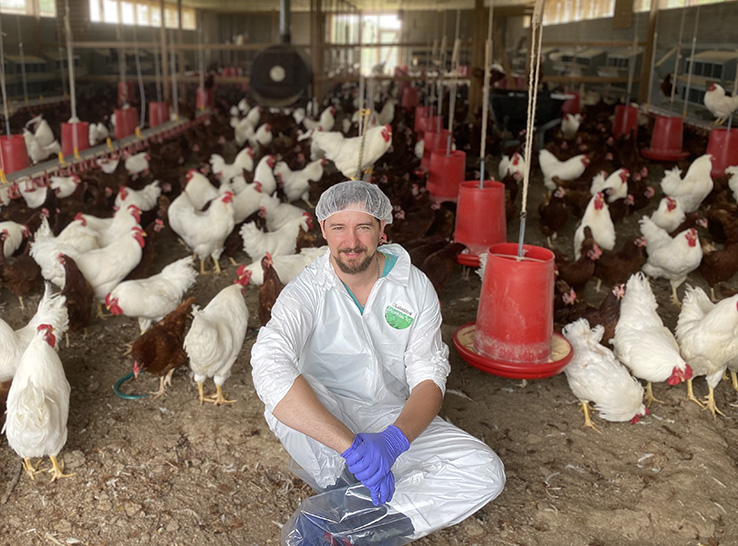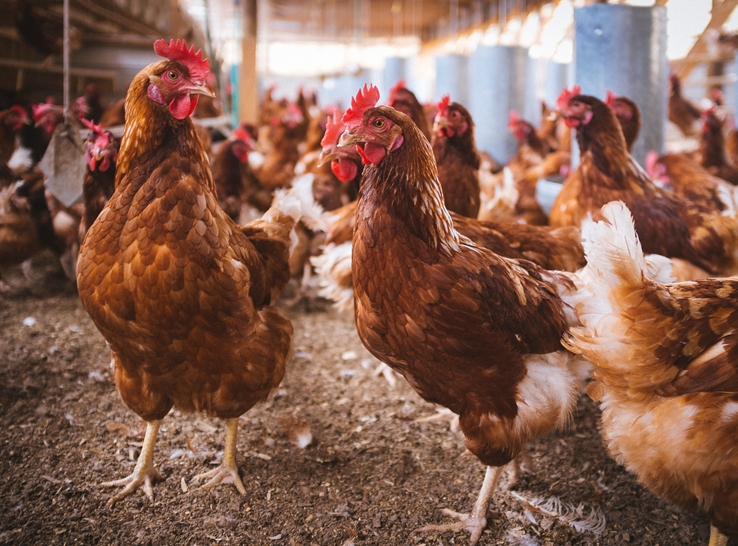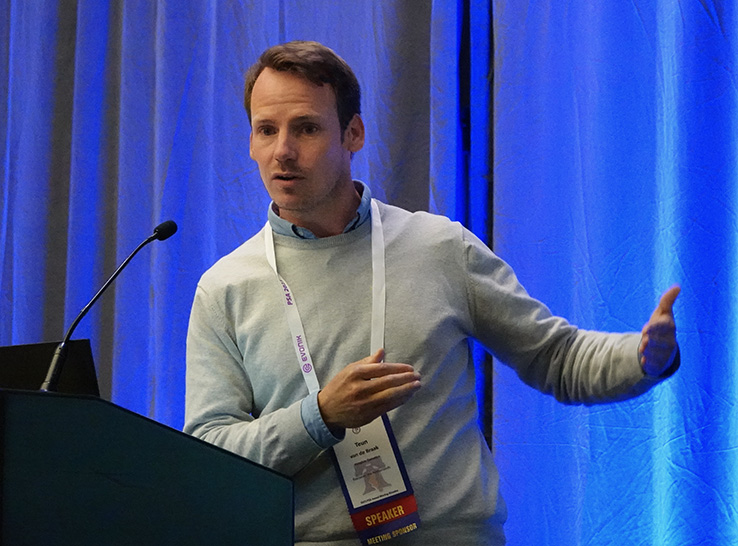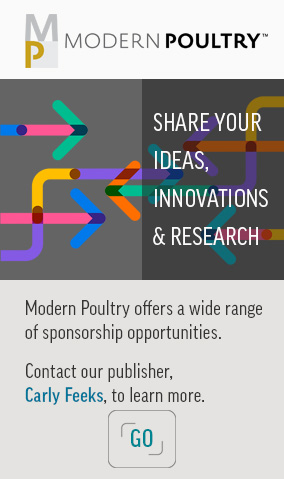By Alexander W. Strauch, DVM
Four Star Veterinary Service, LLC
Minton Veterinary Service Office
Chickasaw, Ohio
Within the unique niche of poultry medicine, there is an even more specialized sect of veterinarians working in the commercial egg-layer industry. Over the last decade, we have been evolving alongside egg companies, catering to the needs of laying hens within alternative production systems that include cage-free, free-range, pasture-raised and organic systems.
As our readers are well aware, the health, welfare, performance and management challenges of cage-free layer flocks are wildly different compared to the challenges of hens in classic battery-cage systems.
The ‘forgiveness factor’
Since my graduation from Michigan State University’s veterinary school in 2017, I’ve had the opportunity to actively participate in the enhancement of cage-free animal health and management programs at the ground level of live production. I spent my first 5 years servicing layers for a private egg company and the last 2 years consulting for multiple commercial poultry operations across the US and Mexico through Four Star Veterinary Service.
Seeing the differences across multiple layer operations has given me a unique perspective on the spectrum of practices and success rates for companies transitioning from conventional to cage-free production systems. In short, the “forgiveness factor” in cage-free systems is substantially smaller than that of conventional systems since small problems more quickly become big problems in group-housed aviaries. This article will focus on my personally curated determinants of success for cage-free layer transitions.
Data management
Point blank — if a layer operation is still holding a once-monthly paper-records review of 2-week-old data, they are lightyears behind the minimum management needs of cage-free flocks. Ideally, a progressive cage-free operation is capturing daily metrics for mortality, egg production, feed consumption, water consumption, temperature and mislaid eggs as well as weekly metrics of case weights, litter depth and especially bodyweights in as close to real time as possible.
Furthermore, the real-time capture of this data should be digitally centralized to facilitate the rapid reviewal process needed to stay on top of flock performance. Once digitally centralized, key decision-makers must be required to review records either daily or weekly, with a formal production meeting carved out for each farm on a weekly basis. These weekly production meetings benefit from having the veterinarian, nutritionist, farm manager and respective barn supervisor present so that aberrant data is identified, root-cause analyses are initiated and corrective actions taken. While different flock data-management systems exist, the data is useless if it is not militantly reviewed on a reoccurring basis.
In short, those farms that are closest to their data will be the most successful in the coming years.
Personnel strength
It’s no secret that cage-free egg production requires more people. Additionally, caretakers and technicians are now required to be even more “bird smart” than previously was necessary.
At the barn level, general laborers should be expected to immediately identify and report layer health and welfare issues to their supervisors. Examples include diarrhea, feather loss, pecking, piling, warts, mites, oculo-nasal discharge, swollen eyes, respiratory distress and lethargy — among others. This directly correlates to quicker identification of issues and intervention, which ultimately yields better outcomes.
If language barriers are present, a bilingual supervisor needs to be found or an investment made in language classes, which can pay for themselves within a year’s time. Fortunately, my ability to speak Spanish has demonstrated that spending 5 minutes chatting with a Spanish-speaking flock caretaker at the beginning of the day shift can yield a wealth of valuable information.
Lastly, the collective intelligence of our industry as a whole is useful only if our team members can access it. Therefore, I strongly encourage layer operations to send their directors as well as middle management and barn supervisors to industry conferences.
Vaccination programs
Not surprisingly, the health and disease challenges of cage-free flocks are vastly different from those of caged birds. For instance, cage-free hens have increased metabolic needs because they tend to jump up and down in their “jungle gyms”— and because of increased pressures from Escherichia coli.
Enhancing immunity can mitigate some of these issues. In fact, bolstering the bird’s own immunological armor against the latest disease du jour seems to no longer be a discussion of if, but when. Infectious coryza has infiltrated a significant portion of the Midwest over the last year, and investing in a 2-part pullet-vaccination program is now a necessity given the historical rate and scope of spread.
Cage-free production facilities should have elevated E. coli-mitigation measures. Enhanced pullet-vaccination programs for E. coli should now be accompanied with multiple in-lay boosters because colibacilloisis due to avian pathogenic E. coli does not seem to have a geographical predilection, at least in my experience. A standard in-lay E. coli booster-vaccination program that I’ve instituted for multiple cage-free operations starts with a 40- and 60-week boost, which can be bumped up to earlier ages in lay if needed, based on mortality rate trends and necropsy findings.
Barn hygiene
Cage-free layers also need enhanced barn cleaning and disinfection (C&D). Good barn hygiene starts before the flock is even placed; skipping any of the minimum base-line requirements of an aviary clean-out program can and will come back to haunt producers at some point during the lay cycle.
In addition to combating minerals and microbes in the waterlines with an industrial-level C&D program between flocks, the aviaries themselves must be thoroughly cleaned to prevent an accumulation of microbial pressures that, over time, can overwhelm the bird’s immune system. While the first flock in a cage-free barn might not succumb to an overwhelming E. coli outbreak, the second and third flocks in that same barn face mounting bacterial pressures that only get stronger over time if not mitigated with elbow grease and chemical cleaning agents.
At the minimum, an aviary clean-out program should include a dry clean-out, a wetwash of floors and surfaces, and then fogging. During the flock’s lay cycle, daily hygiene practices must mandate 100% mortality removal as carcass scavenging can cause increased disease spread if left to sit and fester.
On a weekly basis, it’s important to ensure that litter levels do not get excessively high, which helps limit the raw amount of biological debris present among birds. Some progressive producers are not only utilizing their daily floor-scraper systems for hours on end during the morning egg rush but are instituting multiple full-floor clean-outs at night when flocks are roosted in an effort to “flush the toilet” and decrease the microbial loads in the house during the lay cycle.
This may seem like a lot of work for each cage-free flock. However, if you’ve ever seen run-away mortality after 60 weeks of age from peritonitis and salpingitis that didn’t respond to booster vaccinations and waterline acidification, you’ll always wonder if a few floor clean-outs could’ve postponed these outbreaks. Trust me – they help.
Willingness to invest
There are other big-picture operational determinants of success when transitioning to cage-free production such as amenable supply chains, bank investiture, raw-material sourcing, aviary equipment type, pullet rearing, etc., but one determinant that deserves special attention is a willingness to invest. This is an umbrella issue that in some way touches on every facet discussed herein.
I have purposely omitted the words “price” or “cost” in an effort to avoid any negative psychological conditioning our readers have from the ever-present “how much” discussions they’re all too familiar with. But as a former professor of mine often proselytized, “speak in terms of the return on investment.” This is a very reasonable topic of conversation to have with the flock veterinarian, who can hopefully explain why a decrease of 4% in cumulative mortality by 80 weeks of age or an increase of 1.5 eggs per hen housed can pay for an investment, and then some.
Short -sightedness in opting out of a veterinary recommendation due to perceived financial barriers not only avoids dealing with the issue today but most likely exacerbates the issue by tomorrow through the compounding nature of cage-free health issues. My approach is to make reasonable recommendations, set quantifiable expectations and evaluate afterwards. Investing “X” amount of dollars in side-by-side veterinary support can, in my experience, yield favorable and profitable results.
Alexander W. Strauch, DVM, is the lead poultry veterinarian for Four Star Veterinary Service’s Ohio-based clinic. He serves multiple commercial poultry farms across the US and consults with international clients. He specifically caters to egg-layer operations and has a special interest in cage-free production. He can be reached at astrauch@4starvets.com and https://4starvets.com/veterinarian/alex-strauch-dvm/.
Editor’s note: The opinions and/or recommendations presented in this article belong to the author and are not necessarily shared by Modern Poultry.

